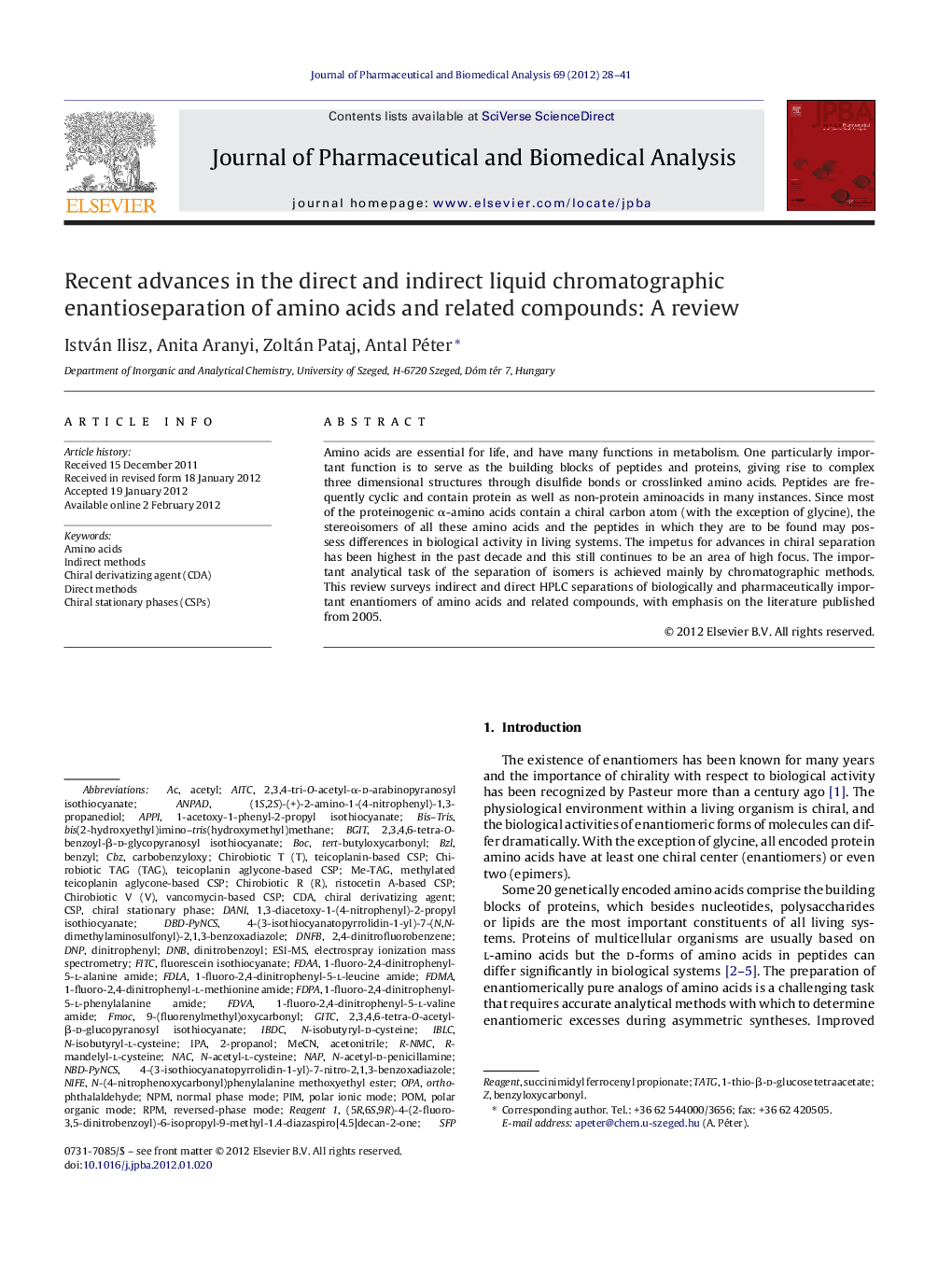| کد مقاله | کد نشریه | سال انتشار | مقاله انگلیسی | نسخه تمام متن |
|---|---|---|---|---|
| 1221584 | 1494664 | 2012 | 14 صفحه PDF | دانلود رایگان |

Amino acids are essential for life, and have many functions in metabolism. One particularly important function is to serve as the building blocks of peptides and proteins, giving rise to complex three dimensional structures through disulfide bonds or crosslinked amino acids. Peptides are frequently cyclic and contain protein as well as non-protein aminoacids in many instances. Since most of the proteinogenic α-amino acids contain a chiral carbon atom (with the exception of glycine), the stereoisomers of all these amino acids and the peptides in which they are to be found may possess differences in biological activity in living systems. The impetus for advances in chiral separation has been highest in the past decade and this still continues to be an area of high focus. The important analytical task of the separation of isomers is achieved mainly by chromatographic methods. This review surveys indirect and direct HPLC separations of biologically and pharmaceutically important enantiomers of amino acids and related compounds, with emphasis on the literature published from 2005.
► Chiral separation of amino acid enantiomers applying chiral derivatizing agents (CDAs).
► Application of chiral stationary phases (CSPs) in the enantioseparation of amino acids.
► Application of cyclodextrin- and macrocyclic glycopeptide based CSPs.
► Application of chiral crown ether-, quninine-, and polysaccharide-based CSPs.
Journal: Journal of Pharmaceutical and Biomedical Analysis - Volume 69, October 2012, Pages 28–41